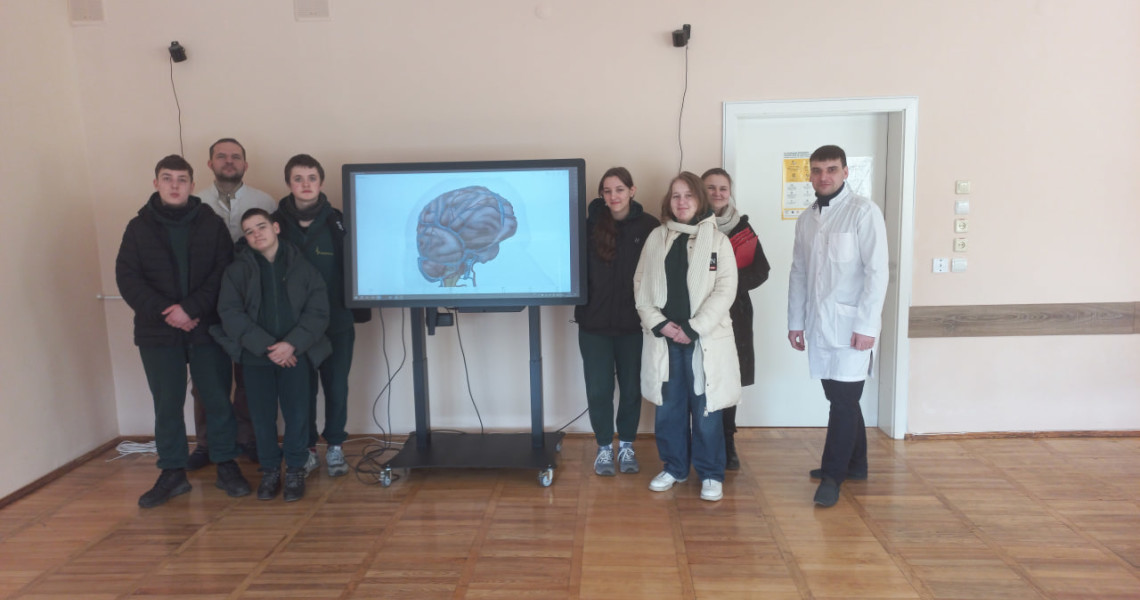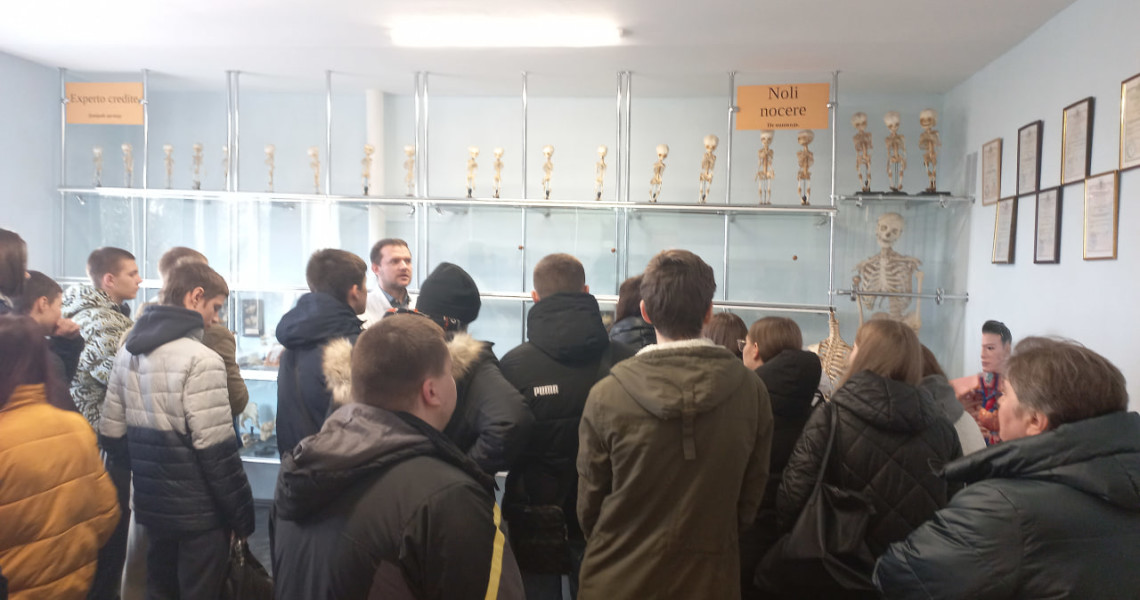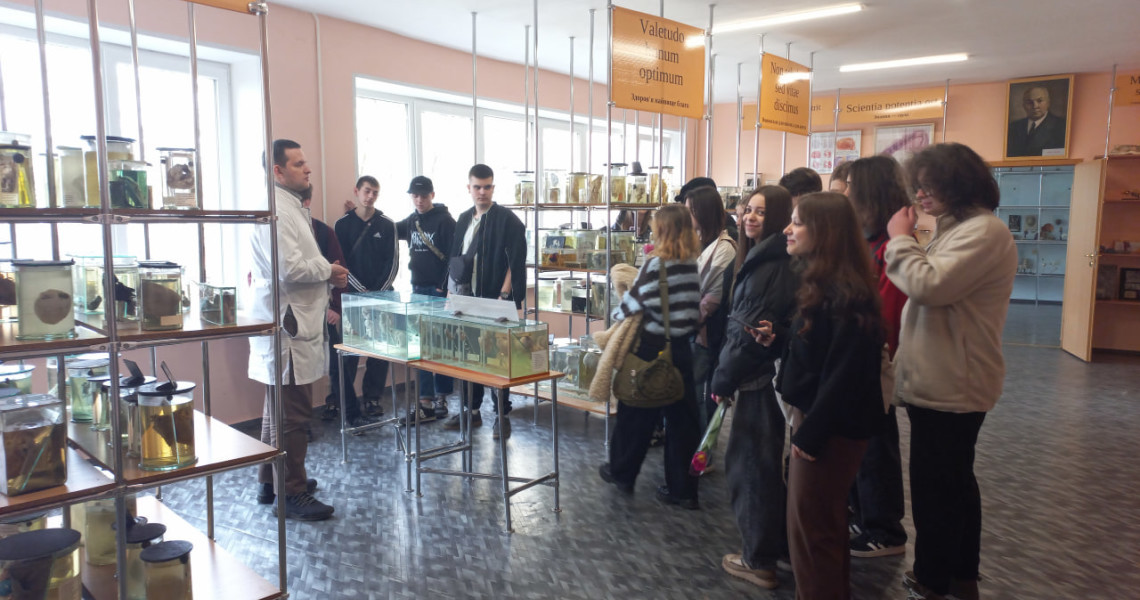З 4-ого по 10 березня на кафедрі анатомії людини ЗВО ПДМУ пройшов тижневий курс екскурсій для здобувачів освіти ВСП «Фаховий коледж управління, економіки і права Полтавського державного аграрного університету». За цей час нашу кафедру відвідали студенти різних освітньо-професійних програм підготовки: «Маркетинг», «Правознавство», «Менеджмент в юридичній діяльності», «Логістика». Викладачі кафедри у цікавій інтерактивній формі розповіли про анатомію людини та на прикладі експонатів музею продемонстрували будову органів, окремих ділянок тіла людини та їхні особливості. Також звернули увагу гостей на інноваційні методи вивчення анатомії, які застосовують в університеті: VR-технології, інтерактивні анатомічні столи та 3D-моделювання. Завдяки цим сучасним інструментам студенти можуть детально вивчати просторове розташування органів і занурюватися у світ медицини. Після екскурсії студенти ВСП «Фаховий коледж управління, економіки і права Полтавського державного аграрного університету» поділилися яскравими враженнями, помітивши, що сучасні технології роблять навчання майбутніх медиків захоплюючим, доступним і ефективним.
Students of the Separated Structural Subdivision "Professional College of Management, Economics and Law of Poltava State Agrarian University" visited PSMU: details below
From March 4 to March 10, the Department of Human Anatomy at PSMU hosted a week-long series of tours for students from the Professional College of Management, Economics and Law of Poltava State Agrarian University. During this time, students from various educational and professional training programs—"Marketing," "Law," "Management in Legal Activities," and "Logistics"—visited the department.
The department's faculty presented an engaging and interactive overview of human anatomy, using museum exhibits to demonstrate the structure of organs, specific body areas, and their unique features. They also introduced visitors to innovative methods of studying anatomy applied at the university, including VR technologies, interactive anatomical tables, and 3D modeling. These modern tools allow students to explore the spatial arrangement of organs in detail and immerse themselves in the world of medicine.
After the excursion, the students shared their enthusiastic impressions, noting that advanced technologies make learning for future medical professionals exciting, accessible, and highly effective.









